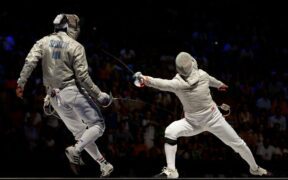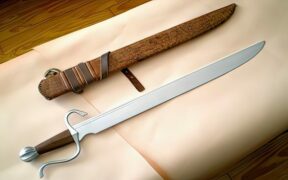Our content features commercial links to our products, committed to transparent, unbiased, and informed editorial recommendations. Learn More
Exploring The Epee Sword: Features, Uses, and History
NO AI USED This Article has been written and edited by our team with no help of the AI
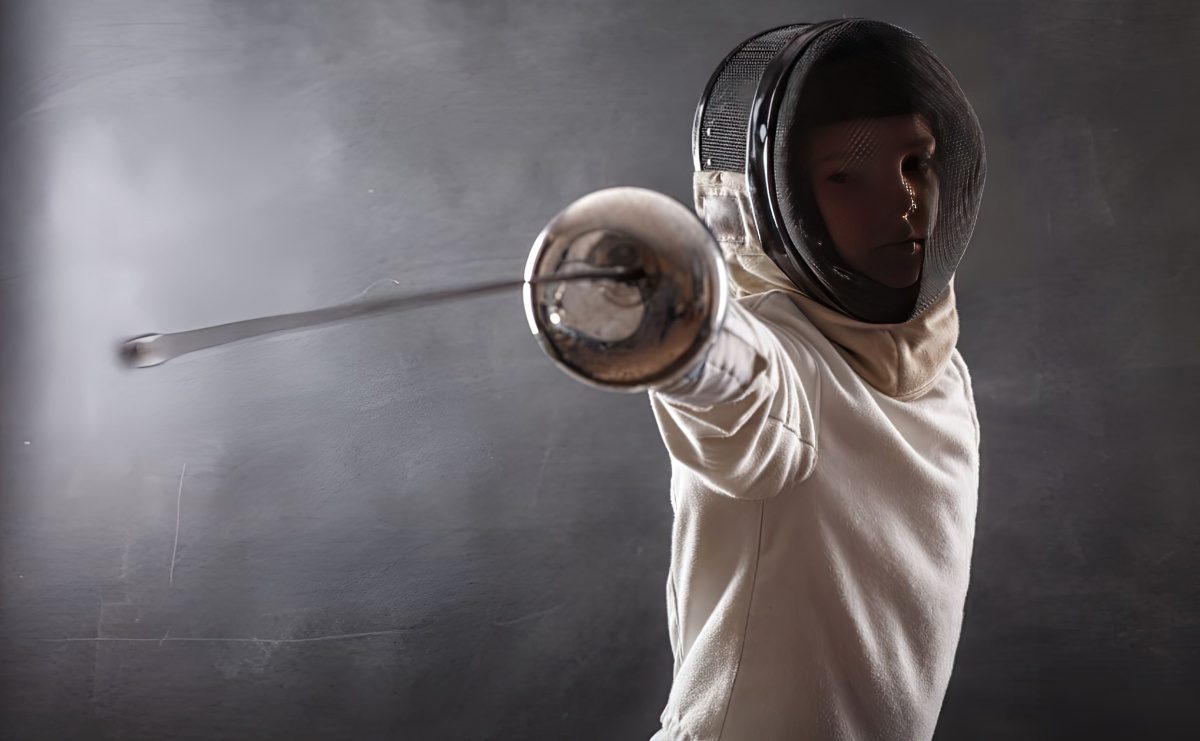
The Epee (Épée) sword is a type of fencing sword known for its long, narrow blade. It stands out from other fencing swords like the foil and saber because it’s broader, heavier, and more rigid.
Originally used for self-defense and sport, the Epee has a rich history. This sword is famous for dueling and military use, making it a key piece in modern fencing competitions.
This article will look at its special features, uses, and how it has evolved.
Characteristics of the Epee Sword
The Epee sword is one of the three highly popular fencing foil swords used in modern sword fencing.
It has the strongest and most different visual characteristics out of the rest of them primarily because of its large guard and broader blade. Despite that, it is still a one-handed sword made of many components and parts.
Anatomy & Parts
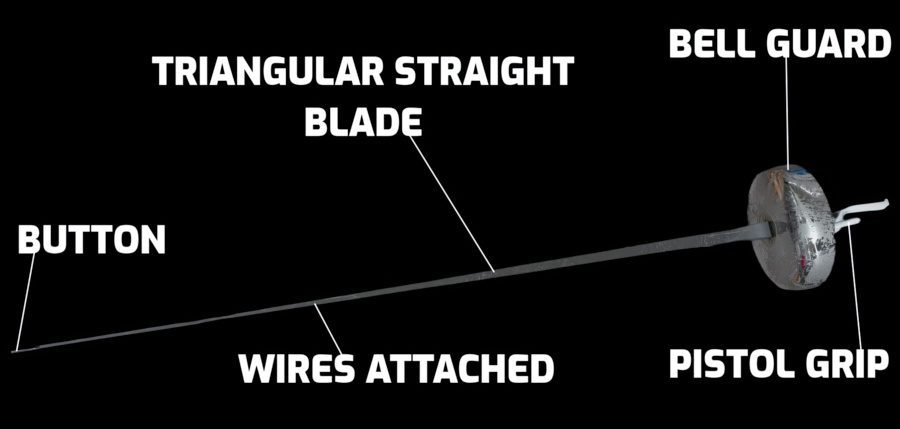
1. Blade
The Epee sword is heavier and more rigid than other fencing blades due to its triangular blade cross-section and steel construction. In addition, the blade is longer, measuring roughly 35 inches (90 cm), and is made to thrust rather than cut.
A button at the end of the blade makes it less likely that the user may accidentally stab their opponent and be connected to the power grid, which will let everyone know of a successful hit.
The Epee blade does not have a sharpened cutting edge, despite its triangular cross-section. Wires are run through its entire length to enable the electric fencing scores.
2. Button
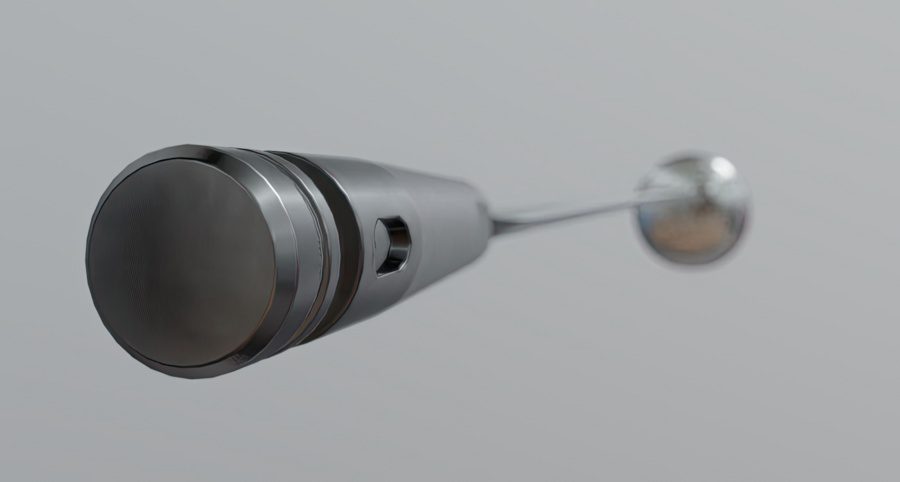
The Epee tip is called “the button,” made out of several parts: the mushroom part at the very tip, the housing or the barrel around the tip itself, and the return and contact springs.
These parts are all flexible, especially the springs, which measure the pressure and force that needs to be pressed for a successful hit or touch.
3. Guard
The Epee sword’s guard, often called a bell guard because of its shape, is made of metal to protect the fencer’s hand.
It covers much of the hand, making it tough for an opponent to hit. The guard is larger than those on foil fencing swords since the hand is a target in Epee dueling.
Despite its size, the guard doesn’t limit movement. It’s designed to be 1.2 to 2.2 inches (3 to 5.5 cm) deep with a 5-inch diameter (12.5 cm), allowing for flexibility while fencing.
4. Handle
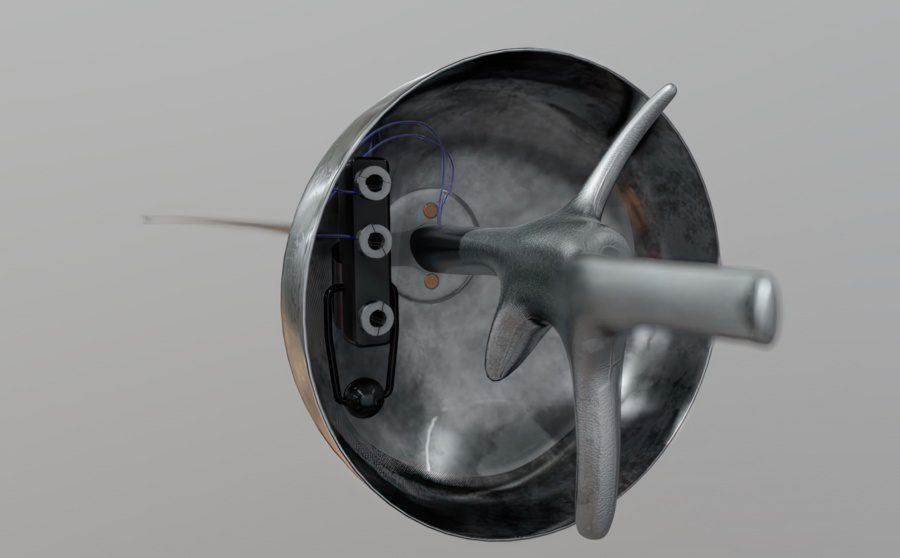
The handle of the Epee sword is usually made from plastic, rubber, or leather, designed to fit comfortably in the hand.
It comes in various shapes and has quillons to help the fencer grip it securely for different attacking moves. Typically, a screw at the pommel secures it, allowing for the attachment of different grips.
- Italian Grip (illegal)
- French Grip
- Hungarian Grip
- Russian Grip
- Visconti Grip
- Bent Grip
- Pistol Grip
While fencers can choose from various handles and guards based on personal preference and competition rules, the standard handle length is 7.8 inches (20 cm).
5. Pommel
The Epee sword’s rounded knob at the end of the handle is called the pommel. It balances the sword and gives the fencer more control by acting as a counterbalance to the blade.
Other than that, it serves to hold the handle together with a screw, and at times, it can be connected with electricity and the power box for powering the sword in tournaments and matches.
Length & Size
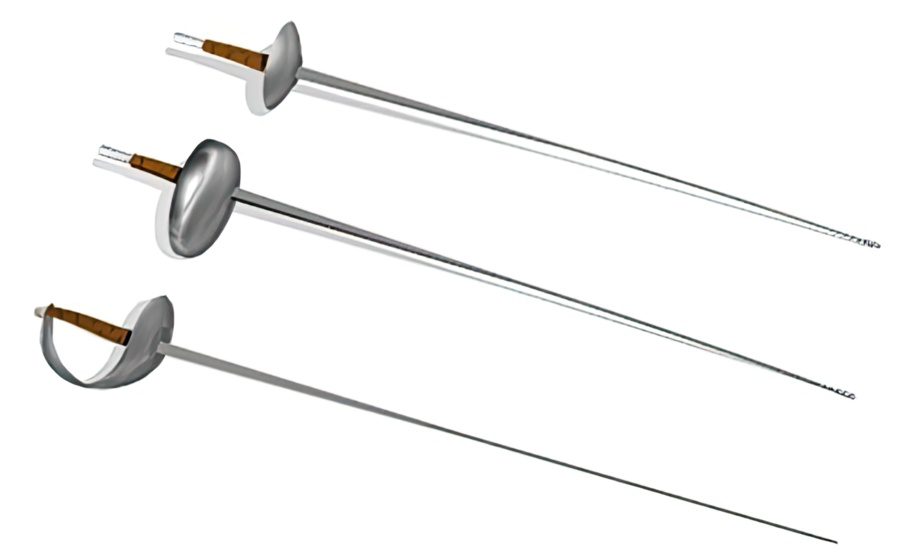
The Epee sword can come in various sizes and lengths depending on the rules of sport combat or adult and child versions.
The most used and average length for an Epee sword used for fencing or training is 39 inches (100 cm). This makes it a reasonably long sword with a more extensive reach than other electric weapons.
Weight
The Epee sword is fairly long, but because it is used with one hand, it is made to be a very light sword. The average weight for the Epee is 1.65 lbs (750 grams) or lower.
The ones that are used for highly experienced competition are mostly made lighter and average from 0.66 to 0.99 lbs (300 to 450 grams).
Uses of the Epee Sword
The Epee sword is a long, light, one-handed instrument meant primarily for thrusting strikes. The most important thing for this thrusting weapon is the footwork and the precision and speed of the wielder hitting his enemy or opponent before he gets struck first.
Because of these attributes, the Epee is one of the most popular fencing and tournament swords.
Fencing & Dueling
Fencing is a sport where two competitors use Epee swords to try to touch each other with the sword’s tip. It requires fast reflexes, physical strength, and smart tactics.
The Epee is key in various forms of fencing, from classical to Olympic, and is used for self-defense, practice fights, and competitions. The main goal in Epee fencing is to strike without getting struck.
Thanks to its safety and non-lethal nature, the Epee is a preferred practice weapon for fencers and sword enthusiasts.
It helps them sharpen their skills, strategy, and especially their footwork. Fencing is not only good for mastering sword techniques but also boosts overall physical fitness.
Tournaments & Rules
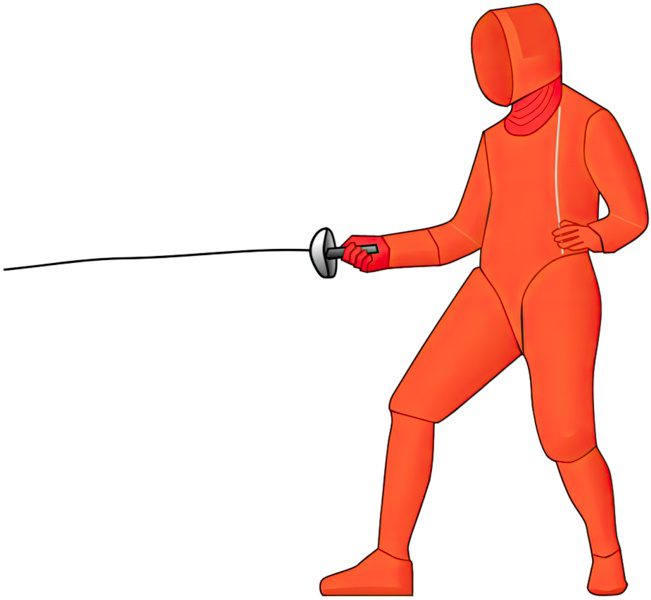
In Epee fencing, unlike Foil and Saber, the whole body is fair game for scoring with the blade’s tip. This idea came about in the 19th century to mimic real dueling, making fencers watch out for attacks from any direction.
Points are scored when the sword’s tip touches the opponent. Only hits to the body count, not to the ground, the other’s blade, or if the tips touch. This is due to the conductive floor used in fencing. To score, you must hit with at least 7.4 Newton (750-gram force).
Fencers need to have the right gear, including two swords and two sets of body wires, ready for use if anything breaks.
History of the Epee Sword
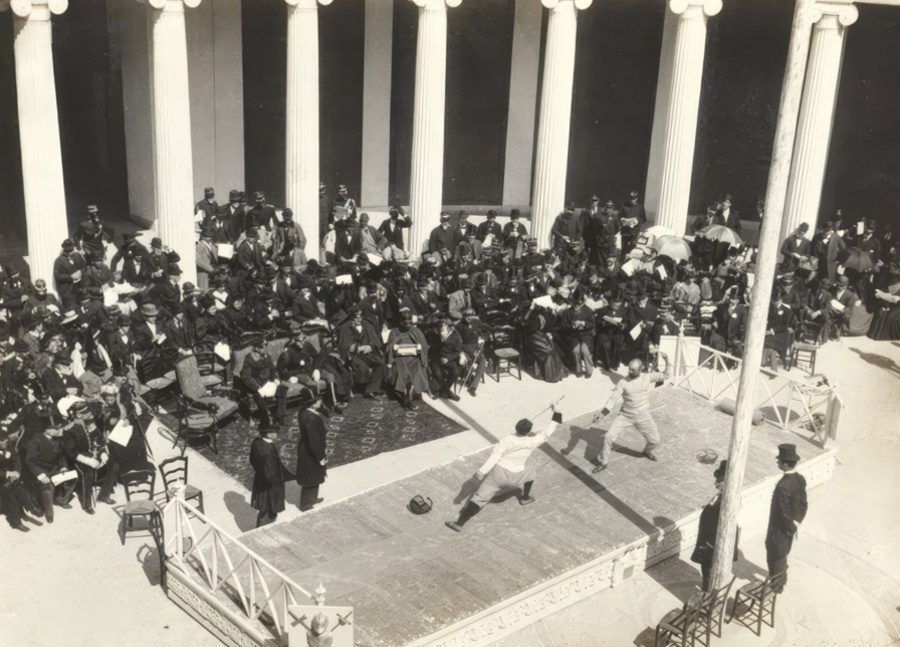
The Epee, like the Foil, originated from lightweight civilian swords such as the smallsword, which became the main dueling weapon by the late 17th century, replacing the heavier rapier. Epee fencing today mirrors 19th-century duels, requiring the blade to touch the target to score.
The Epee developed in the 19th century when duels were fought until “first blood” was drawn, rather than to the death. A small cut could determine the duel’s winner.
Epees with full-cup guards, appearing since the 17th century, became widespread for dueling.
The 19th-century book “Secrets of the Swords” mentions using the Foil for practice, and preparing for actual duels, mainly in France and Italy. Fencing masks were introduced, making Epee fencing as realistic as possible, aiming to strike any body part.
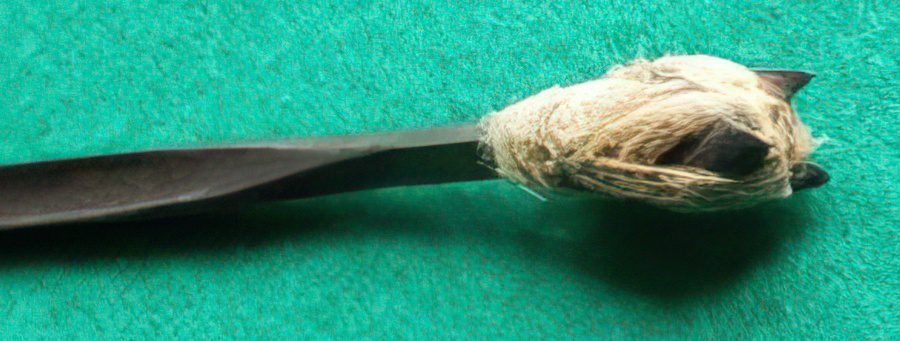
In 1896, the Societé d’Escrime à l’Epée de Paris established the rules for dueling, and the first tournament was held in Paris the next year.
Early Epee fencers used a special tip with three prongs and spikes to catch on opponents’ clothing, making hits easier to see. This made Epee fencing painful, with experienced fencers recognized by their gear’s holes.
Later, a dye-tipped point showed where touches landed on white gear. From 1936, electric Epees were used, completing an electrical circuit upon touching, modernizing scoring.
What is the Difference between the Epee and other Fencing Swords?
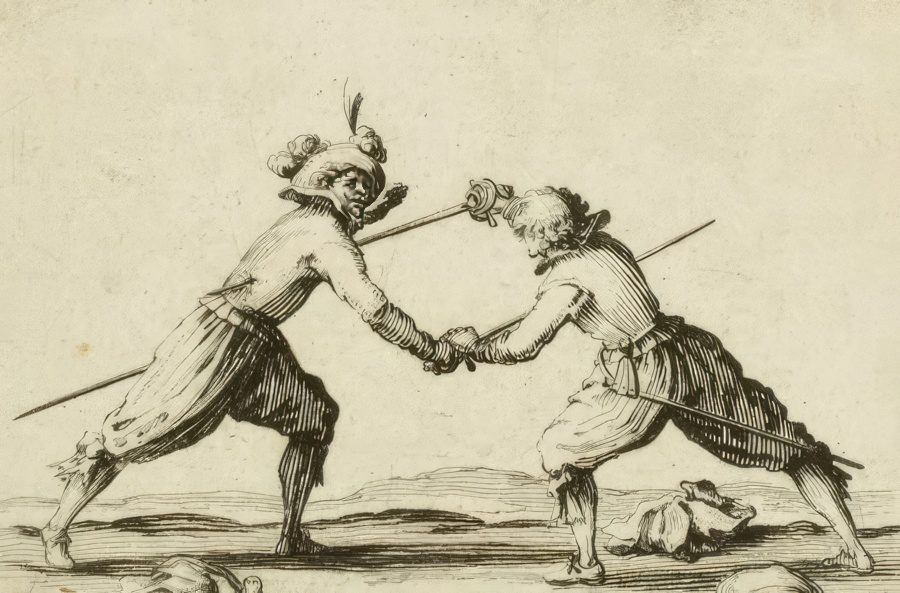
It’s common practice to draw parallels between the Epee sword and other fencing and dueling swords. The following are some of the most notable characteristics that are different from the Epee sword.
- Foil Sword – Lighter, more flexible, and has a smaller, more pointy blade. When used in fencing, the Foil is primarily used for thrusting only in the torso of the opponent, making it a more precise weapon for scoring points.
- Sabre Fencing Sword – Also lighter and more flexible and can be used to strike from the sides and the tip effectively. It features a sabre-like guard, which is opened up from the sides to allow for more maneuverability and versatility of the strikes.
- Rapier – The rapier is a real sword made with a sharp cutting edge meant for lethal slashing and thrusting. It has a more complex hilt around the user’s hand and was used in the 16th and 17th centuries for self-defense and dueling.
- Smallsword – The smallsword can also be a high-carbon steel blade made for lethal attacks. It has a more narrow and tapered blade than the rapier and was used primarily in the 18th century. It is believed the Epee design comes from the smallsword.
